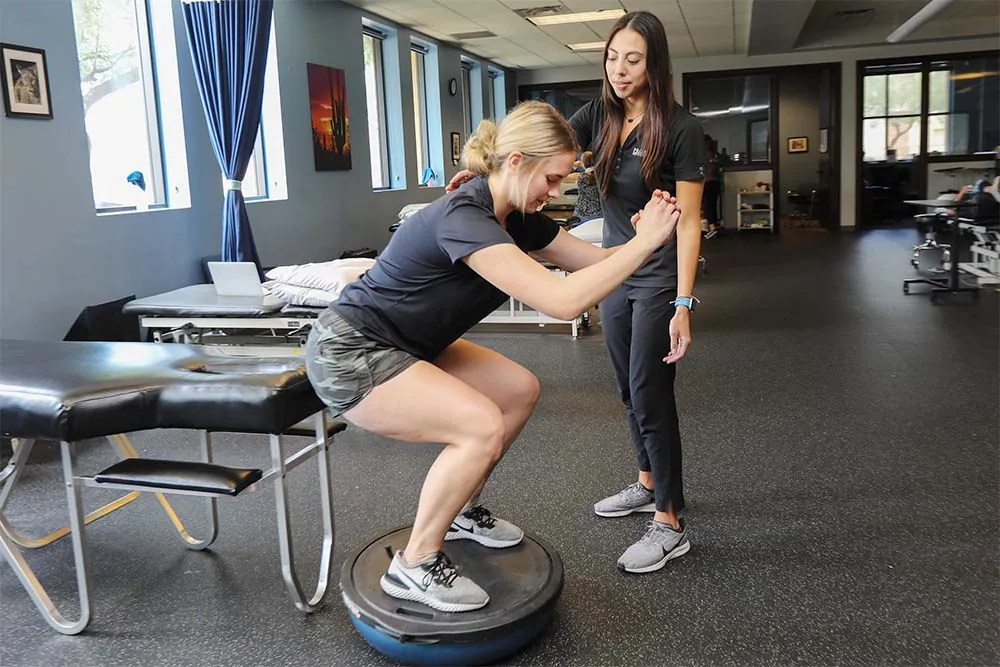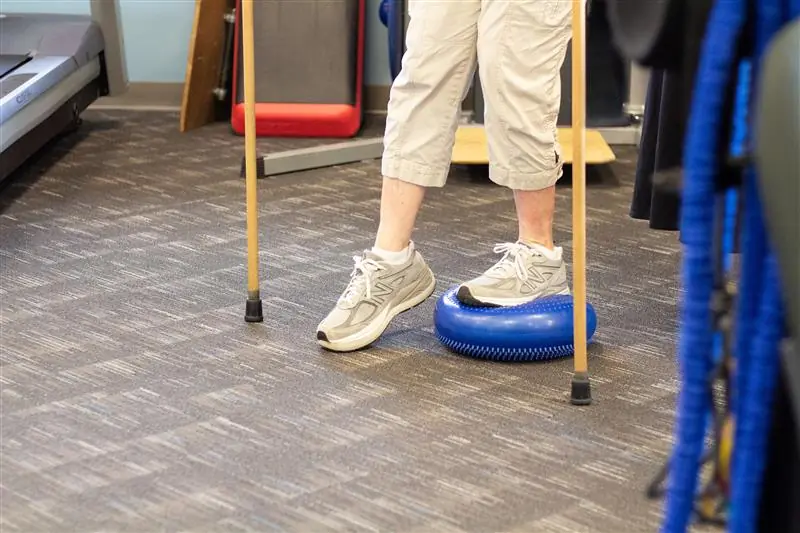Balance problems are the leading cause of injury for senior citizens in the United States. This may stem from a majority of issues. It could be a specific cause such as issues with your sensory system leading to imbalances. Or, a new injury that limits movement and places you in unexpected positions. It could be you have issues from an old injury that has not been addressed and have slowly led to a point where you are constantly catching yourself from falls and may consider or are learning to ambulate with an assistive device.
There are several major components your body uses that assist with your balance. An experienced physical therapist can assess these components before creating a custom hands-on physical therapy approach.

Vision
Your vision helps your brain to organize where it is in space. Commonly where there are deficits in other areas that affect balance, individuals can become reliant on vision. It is not unusual to have a patient who can stand perfectly still on a single leg with their eyes open and quickly become a fall risk after they close their eyes.
Proprioception
Close your eyes and move your arm over your head. Knowing where your arm is without seeing it is proprioception. Issues with proprioception can range from decreased sensation, not uncommon in the lower extremities and a common factor with balance disturbances, to the weakness that limits the patient’s ability to stabilize.
Vestibular system
Your vestibular system lets your body know when you are accelerating. Patients may present issues such as turning over in bed, causing uncontrolled spinning, and a sense of vertigo. This can come from several causes, including issues with the sensory organ itself and the nerves that conduct these signals.
Putting it all together
Multiple factors may be tied together, leading to issues with balance. Your physical therapist may test for components individually or as a group. We run several tests to determine how unstable you are with dynamic movement and what components are the limiting factors. For example, a patient can have issues with stability when reaching outside of their base support but have no limitations when they are on uneven ground.

What to Expect
Depending on your presentation, your physical therapist will work to create a hands-on plan to address your specific deficits to improve your balance and stability. Whether your limitations prevent you from performing a higher-level activity, such as dancing or learning to use an assistive device to help with balance, we will be there to help get your move back.
Depending on your goals and limitations with balance problems, physical therapy has a place for you. ProActive has 9 locations throughout Tucson; visit a location nearest you for a free assessment.




